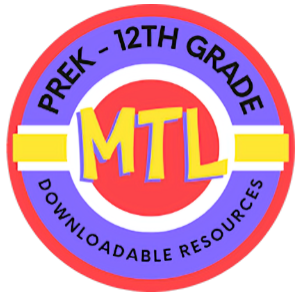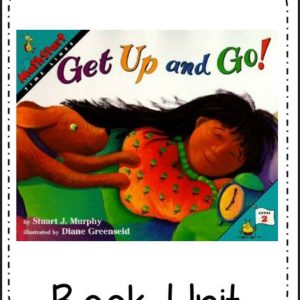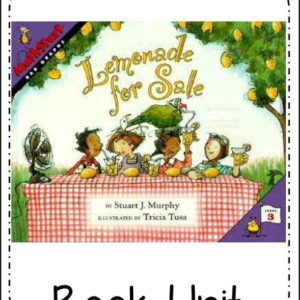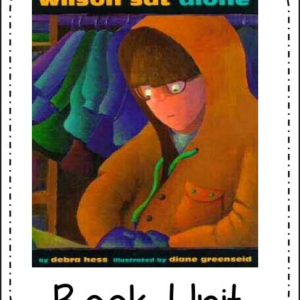Category: Book Units
Showing 21–33 of 33 resultsSorted by latest
-
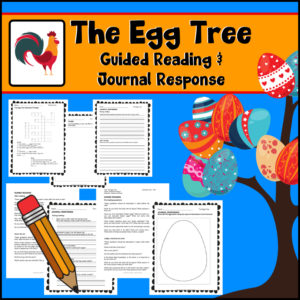 $3.00Buy Now
$3.00Buy NowAn engaging resource offering guided reading questions and student journal pages in which students will be asked to give opinions, answer factual questions about the story, use critical thinking skills and be creative!
For the Teacher:
- Suggested Pre-Reading, Review the Cover, After Reading, and About the Artwork questions are provided. These should be teacher directed.
For the Students:
- Worksheet for students to answer questions from the story
- Worksheet to produce questions both while reading and after reading
- 5 art responses
- BONUS: Crossword Puzzle
Level: 560L
I’ve included 2 sets of writing pages to accommodate deferring student levels. One set has dashed lines, the other includes solid lines.
About the story: The Egg Tree was written and illustrated (1951 Caldecott Medal) by Katherine Milhous. The book “The egg tree” tells the history of two children named Katy and Carl, they are going to their grandmothers farm in Red Hills, Pennsylvania, this is the first time the children have the opportunity to spend Easter with their relatives from this part of the country, so they get to meet four of their cousins, the next morning the children wake up early to participate on the Easter egg hunt. Katy seems to have some trouble finding the eggs in this new and unexplored environment, so she decides to explore inside the house, in the attic looking around Katy finds six beautifully painted eggs that she takes to her grandmother immediately, the grandmother express her joy by saying “Katy may not have found the most eggs, but she found the most beautiful eggs”. So then the grandmother decides to decorated a tree with the eggs using them as a kind of ornament, all the kids get inspired because of Katy’s discovery and the grandmother’s joy so they all decided to put special emphasis on their own decoration of the eggs and they decorated a large tree, and the next year one that was even larger.
-
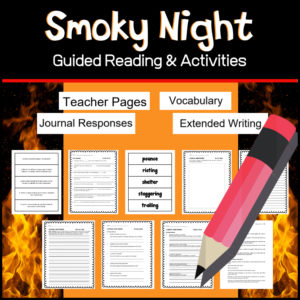 $4.50Buy Now
$4.50Buy NowAn engaging resource offering guided reading questions and student activities for Eve Bunting’s book, Smoky Night. (1995 Caldecott Medal award winning book illustrated by David Diaz!) During this unit, students will be asked to give opinions, answer factual questions about the story, use critical thinking skills and be creative!
For the Teacher:
- Suggested Pre-Reading, About the Cover, After Reading and About the Art work questions are provided. These should be teacher directed.
For the Students:
- Worksheet for students to answer questions from the story
- Worksheet to produce questions while reading
- Worksheet to produce questions after finishing the reading
- 3 art responses
- Vocabulary – Word Wall / Flash Cards with definitions provided (Suggested use: Have students match definitions and discuss during group)
- Vocabulary Fill-in-the-blank worksheet
- 2 extended writing prompts with pages to produce student writing.
All writing pages include dashed and solid lines because this has been designed for 1st -3rd grades. You choose what is best for your students’ needs and abilities!
Lexile Measure: 360L
-
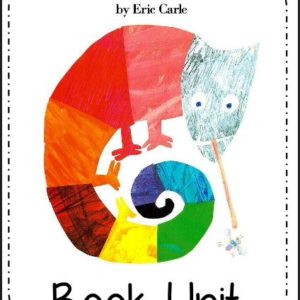 $1.50Buy Now
$1.50Buy Now23 page book unit to use along side: The Mixed-Up Chameleon
-
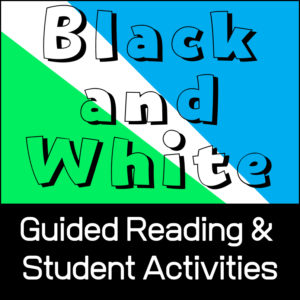 $2.00Buy Now
$2.00Buy NowAn engaging resource offering guided reading questions and student activities that will help students get the most from David Macaulay’s book, Black and White (1991 Caldecott Medal winner).
For the Teacher:
- Suggested Pre-Reading, About the Cover, After Reading and About the Artwork questions are provided. These should be teacher directed.
For the Students:
- Worksheet for students to answer questions from the story
- Worksheet to produce questions while reading
- Worksheet to produce questions after finishing the reading
- 2 Art responses
There are two copies each worksheet which requires students to write. One with dashed lines / One with single lines – Choose which works best based on individual student level (ability).
Reading Level: (2nd-3rd Grade)
-
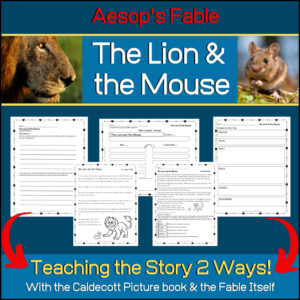 $3.00Buy Now
$3.00Buy NowFun and engaging way to teach the Aesop’s fable, The Lion and the Mouse! This Language Arts resource will use both the Caldecott’s winning picture book by Jerry Pinkney and the actual fable itself to help students gain understanding of the central theme and develop and practice important skills which will require attention to detail (both with illustration and text evidence). Students will be asked to give character analysis, describe the setting, develop a story map, explain cause and effect, show textual evidence and give opinions.
Section 1 (to be used with the Caldecott winning picture book) includes:
- Guided Reading suggested questions
- ‘Write the story’ worksheet
- ‘Think about it’ worksheet
- Character Analysis worksheets
Section 2 (to be used with the fable itself) includes:
- Student copies of the fable
- Character Analysis worksheet
- ‘Central Message’ worksheet
- ‘Textual Evidence’ worksheet
- ‘Story Map’ worksheet
- ‘Cause and Effect’ worksheet
- ‘Relating to your own life’ worksheet (self-narrative)
- ‘Which version did you enjoy most’ worksheet (opinion)
Each writing worksheet offers 2 copies (one with dashed lines and one with single lines). This will allow you to choose which works best for students.
-
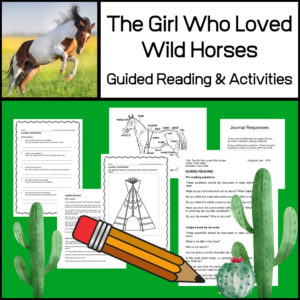 $4.00Buy Now
$4.00Buy NowThis engaging resource offers guided reading questions, student journal responses and other activities that will help students enjoy and appreciate the book and illustrations of The Girl Who Loved Wild Horses, written and illustrated by Paul Goble (Caldecott winner 1979) . During this unit, students will be asked to give opinions, answer factual questions about the story, use critical thinking skills and be creative!
For the Teacher:
- Suggested Pre-Reading, About the Cover, After Reading and About the Artwork questions are provided. These should be teacher directed.
For the Students:
- Worksheet for students to answer questions from the story
- Worksheets to produce questions both while reading and after reading
- 3 art responses
- Poster of horse and worksheet (label the parts)
- Teepee shape book – Suggested uses: Use to create a book report or summary of the story; Use to record and define unfamiliar vocabulary; use to create a poem inspired by the book.
About the story: The story focuses on a young Native American girl who has a deep affinity for wild horses. She cares for the horses that her tribe relies on for the nomadic hunting of buffalo. One day, the herd stampedes due to a thunderstorm, while the girl is among them. She climbs onto the back of one of the horses, and is carried far away from their usual grazing grounds. The next day, the girl awakes to see a beautiful spotted stallion who identifies himself as the leader of all the wild horses, and welcomes her to live with them. Meanwhile, the girl’s tribe searches for her. About one year later, two hunters spot the girl riding with the horses, but she is driven away with the rest of the herd. The hunters return to the tribe with this news, and riders are sent in pursuit. The stallion defends the girl, but she is caught when her horse stumbles. The girl returns home, but is sad to leave the horses. She falls ill with no sign of improvement. The girl asks if she can return, and her parents honor her wish to live among the wild horses again. Each year, she would return to her parents with the gift of a colt. Then one year, she does not return. When the hunters see the wild horses again, they see a mare riding alongside the stallion. They believe this horse to be the girl transformed, which brings the tribe great pride to know they have one of their own riding among them.
-
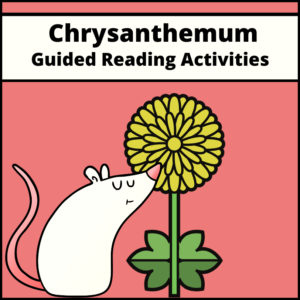 $2.00Buy Now
$2.00Buy NowAn engaging resource offering guided reading questions and student activities that will help students enjoy Kevin Henkes‘s book, Chrysanthemum. (Henkes is a Caldecott winning illustrator.)
For the Teacher:
- Suggested Pre-Reading, About the Cover, After Reading and About the Artwork questions are provided. These should be teacher directed.
For the Students:
- Worksheet for students to answer questions from the story
- Worksheet to produce questions while reading
- Worksheet to produce questions after finishing the reading
- 2 Art responses
There are two copies each worksheet which requires students to write. One with dashed lines / One with single lines – Choose which works best based on individual student level (ability).
Reading Level: 570L Lexile (2nd Grade)
-
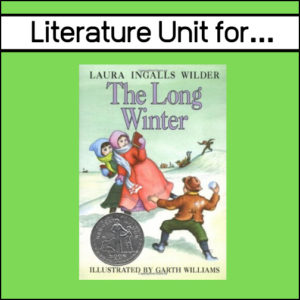 $1.50Buy Now
$1.50Buy NowThis resource offers reading comprehension and discussion questions about the story and characters.
About the book (Not included):
The Long Winter is a historical fiction children’s novel written by Laura Ingalls Wilder and published in 1940, the sixth of nine books in her Little House series. It is set in southeastern Dakota Territory during the severe winter of 1880–1881, when she turned 14 years old. The novel was one runner-up for the Newbery Medal in 1941 (Newberry Honor Book).Interest Level:
Grades 4 – 8Reading Level:
Grades 3 – 6 -
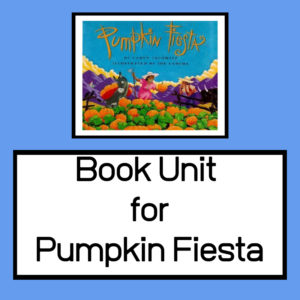 $1.50Buy NowThis Pumpkin Fiesta book unit is a 26 page complete Language Arts resource, providing reading comprehension, vocabulary, grammar and spelling activities! Provides a week worth of activities.About the Book: A foolish farmer tries to copy the actions of a winning pumpkin gardener to grow the biggest and best pumpkins, but he does not pay attention to all the love and care she gives her pumpkins.
$1.50Buy NowThis Pumpkin Fiesta book unit is a 26 page complete Language Arts resource, providing reading comprehension, vocabulary, grammar and spelling activities! Provides a week worth of activities.About the Book: A foolish farmer tries to copy the actions of a winning pumpkin gardener to grow the biggest and best pumpkins, but he does not pay attention to all the love and care she gives her pumpkins. -
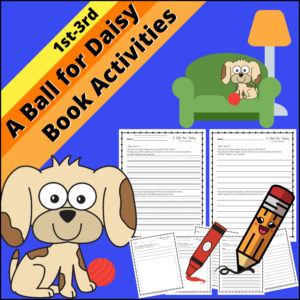 $2.00Buy Now
$2.00Buy NowThis Reading / Literacy resource for 1st, 2nd and 3rd Grades includes critical thinking, narrative and opinion writing and art activities for Chris Rashcka‘s Caldecott winning book, A Ball for Daisy. The book has no words, only pictures, and is a story about love and loss. This product will ask students to get in touch with the story and put words (and pictures) on paper.
